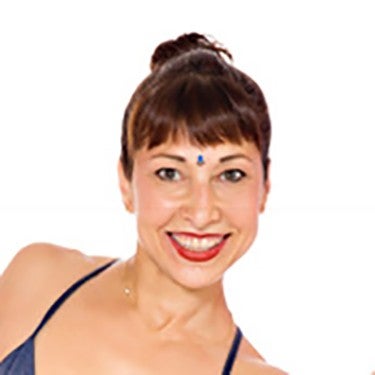
The Yoga of the Hips
“The material body has a practical reality that is accessible. It is here and now, and we can do something with it. However, we must not forget that the innermost part of our being is also trying to help us. It wants to come out to the surface and express itself.” -BKS IYENGAR
It all started...
It starts off like any other yoga practice, any other day. You set aside your time, select your class, throw on your leggings, check. Roll out your mat, find your opening seat, take a few clearing breaths, check. Chant your OM’s, move into some Sun Salutations and standing poses, attempt some arm balances and inversions, check, check, and check.
Ahhhh. Your Yoga! Just you and your breath and your body and your intention to live more mindfully. The shift has begun. Your body is feeling more open, your mind more peaceful. You follow along into a couple of backbends and some neutralizing movements for the spine. Lastly, your teacher announces you will be closing with some hip openers and forward bends. You are so grateful for Yoga, so thankful for these moments to feel connected to community, to feel connected to something Bigger than yourself, to slip into more of a witness perspective that makes some of the nagging worries seem manageable. Life is good. No, Life is great. You can handle the challenges, navigate the peaks and valleys. You are a Peaceful Warrior, inspired and ready to take on the world.
Except that you were in Pigeon Pose for just ten breaths on the right side and now tears are rolling down your face and all you really want to do is dissolve in a puddle and swaddle yourself.
Welcome to the Yoga of the Hips.
Anatomy time
Before we go any further, let’s geek out on what we are really talking about when we say an asana is “hip-opening”. Our hips are a complex system of joints, cartilage, muscles, and nerves, so “opening” or “creating space in” the hips can be approached in a variety of ways.
We can begin this exploration with the joint itself:
We can see that it’s a ball and socket joint, with the head of the femur meeting the acetabulum. The labrum is there in between the two to keep some cushioning for the bones and allow for ease of movement.
Surrounding these bones are the muscles that work to either move or stabilize the joint:
These muscles facilitate flexion, extension, internal and external rotation, and abduction (moving the legs away from center) and adduction (moving the legs closer to center). When we work to “open the hips”, it usually means we are working to release the muscles surrounding the joint, which will also help to increase synovial fluid in the joint, contributing to greater ease of movement.
Your yoga teacher may guide a class with a focus on stretching the muscles that control flexion with Crescent lunges and backbends, for example, or stretching the muscles that control extension with Downward Facing Dog and forward bends. Pigeon pose would stretch the muscles used for abduction, and Upavista Konasana for adductor muscles. Internal rotation muscles begin to open through poses like Extended Side Angle and Warrior 2, and external rotation muscles from Virasana and Supported Half Wheel. Some classes may focus on two or three muscle groups with a variety of asana.
Emotional storehouse
That’s the anatomy of it all, the practical information. Good to know. But now let’s go back to that teary Pigeon pose. Contemplate what body parts we use to “stand our ground” or run away from a threatening situation. Yup. Our hips are an integral part of the fight or flight response.
Suppose you are driving and a squirrel runs across your path. Instinctively, your whole leg tenses and your adrenaline spikes as you slam on your brakes. The squirrel runs safely to the side of the road and you go on about your way. You may even forget about the incident until later that day when your right hip is aching and you feel strangely exhausted. On another day you are late to catch a train, full of anxiousness, and have to sprint across the platform. You make it to the train as the doors are closing and your legs and hips feel like they’re on fire and your mind is still jumping around like a frightened cat.
Studies show that both the physical effort and the accompanying emotion get “stored” in the body. So later that day (or week, month, year, even decade!) when you go to your mat, and begin physically digging in to those areas, it also brings it all back in a very emotional way. No wonder Pigeon pose feels like such a release, even if this release comes decades after the incident. The muscles soften, the emotions come to the surface, and it may seem out of nowhere. the body has processed a past occurrence.
All this to say, my vote would be to let the tears flow. Or the laughter. Elation, sadness, bliss, frustration. Include it all. Step by step, class by class, year by year, let’s work to create a Brave Space within our Practice for physical and emotional movement, and trust the process of undoing. Along the way, please know that if it all feels like it’s too overwhelming to manage on your own, it’s a good idea to recruit a trusted friend or even seek out a recommended therapist. Yoga means Union. There’s the clue. We don’t have to do it alone. Check resources for more information.
Hip release sequence
Here’s a brief 15 minute sequence to release the muscles of the hips in a variety of ways:
What You'll Need: Mat, Blocks (2), Blankets or towels (2)
- Starting from Tadasana, inhale the arms up into Urdva Hastasana and on the exhale, take a forward fold. Slide your right leg back into a lunge and allow the back knee to come down to the ground for Anjanayasana (Crescent Lunge pose). Reach up through the arms and press down into the shin of the leg of the right leg. Hold for 5-8 breaths, then place hands down and step forward, coming back into a forward fold. Inhale the arms back up over head, coming back into Urdva Hastastana, and exhale the arms back down to your sides. Start the sequence on the left side. Repeat each side one more time. This should begin to release the muscles that create hip flexion.
- Next, from your Tadasana, inhale the arms up to Urdva hastasana and exhale into your forward fold. Inhale to come up onto the finger tips and extend the spine forward, exhale plant the palms and hop or step into a bent kneed Down Dog. Lengthen the legs if you can, and stay in Down Dog for 5-8 breaths. This should release the muscles along the posterior chain, or back body.
- From Down Dog, lift your right leg and slide it forward into Pigeon pose preparation. Place a block or blanket under your right hip if it is lifted off the ground. Fold forward, breathing slowly and deeply approximately two to five minutes per side, stepping back to Down Dog or flowing through a Vinyasa after each side.
- Roll forward into a Plank pose, drop your knees and take a Child’s pose. Stay for 3-5 breaths, then swing your legs around in front of you and come into Dandasana.
- From Dandasana, open legs out into Uppavista Konasana, sitting on the corner of a folded blanket for a little more support. Fold forward, placing the block or perhaps the other blanket in front of you so you can drop your head. Breathe slowly and deeply, and try to stay for 10-15 breaths.
- Close the legs back up into Dandasana, catch a block in each hand and roll down onto your back. Set yourself up for Supta Baddha Konasana with a block under each thigh. It could also feel nice to fold a blanket behind your head like a pillow and/or drape another blanket over your pelvis. Stay for five minutes.
Comments
You need to be a subscriber to post a comment.
Please Log In or Create an Account to start your free trial.













